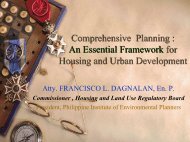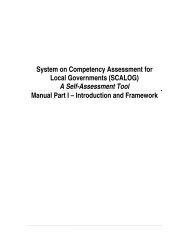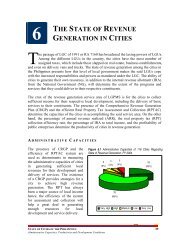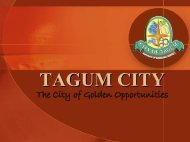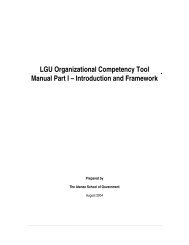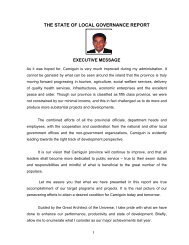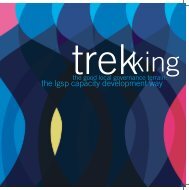19 strategic link to the millennium development goals - LGRC DILG 10
19 strategic link to the millennium development goals - LGRC DILG 10
19 strategic link to the millennium development goals - LGRC DILG 10
You also want an ePaper? Increase the reach of your titles
YUMPU automatically turns print PDFs into web optimized ePapers that Google loves.
Figure <strong>19</strong>.3 Malnutrition Rates in 116 Cities, PY 2004<strong>10</strong>012.9513.2614.5614.72<strong>10</strong>9.251NationalAverageNor<strong>the</strong>rn LuzonAgribusinessQuadrangleMetro LuzonUrban BeltwayCentralPhilippinesMindanao SuperRegionTarget: Reduce by 50% <strong>the</strong> number of people with no access <strong>to</strong> safe drinking waterHousehold with Potable Water. In 2004, a very high national average of 83.3% wasreported by all <strong>the</strong> households in <strong>the</strong> 112 cities in <strong>the</strong> Philippines regarding <strong>the</strong>ir access <strong>to</strong>safe potable water supply. The 55 urban centers in Luzon registered an average of 85.3%of <strong>the</strong> households with access <strong>to</strong> drinkable water while <strong>the</strong> 27 cities in Mindanao, and 30in <strong>the</strong> Visayas had 84.0% and 76.8%, respectively. The accomplishment was quiteimpressive among <strong>the</strong> 72% of <strong>the</strong> urban centers as exhibited by <strong>the</strong>ir distributionaccording <strong>to</strong> performance levels in <strong>the</strong> provision of clean water.Based on <strong>the</strong> current performance average, accomplishing a <strong>10</strong>0% access <strong>to</strong> potablewater for all <strong>the</strong> households in every city in <strong>the</strong> Philippines is not impossible. Based onLGPMS estimates, <strong>the</strong> <strong>to</strong>tal number of households in <strong>the</strong> country without access <strong>to</strong>drinkable water was around 800,000 (see Figure <strong>19</strong>.4). Moreover, <strong>the</strong> cities in <strong>the</strong> MLUBcovered about 36% or nearly 300,000 households without access <strong>to</strong> safe drinking water.This was followed by those in <strong>the</strong> CP with around 29% or over 220,000 households, andthose in <strong>the</strong> MSR with about 23% or nearly 186,000 households without access <strong>to</strong> cleanwater. The urban centers in <strong>the</strong> NLAQ, on <strong>the</strong> o<strong>the</strong>r hand, had <strong>the</strong> lowest number ofhouseholds without access <strong>to</strong> potable water at over 92,000 or 12% of <strong>the</strong> <strong>to</strong>tal.It is anticipated that in <strong>the</strong> next <strong>10</strong> years, <strong>the</strong> target for cities <strong>to</strong> reduce <strong>the</strong> number ofhouseholds with no access <strong>to</strong> drinkable water will be around 400,000. With <strong>the</strong>convergence of efforts and resources, and proper focusing of target areas, such goal iscertainly realistically attainable.154 STRATEGIC LINK TO THE MILLENNIUM DEVELOPMENT GOALS



